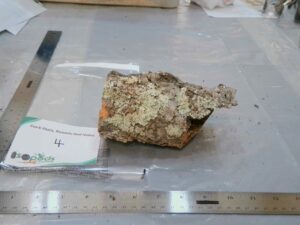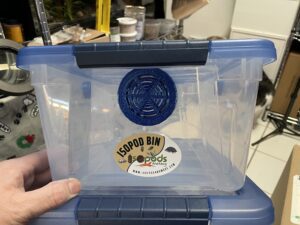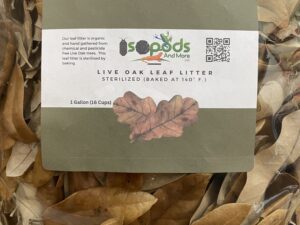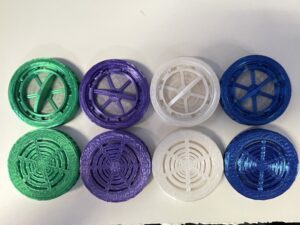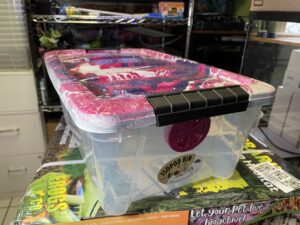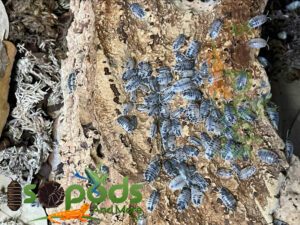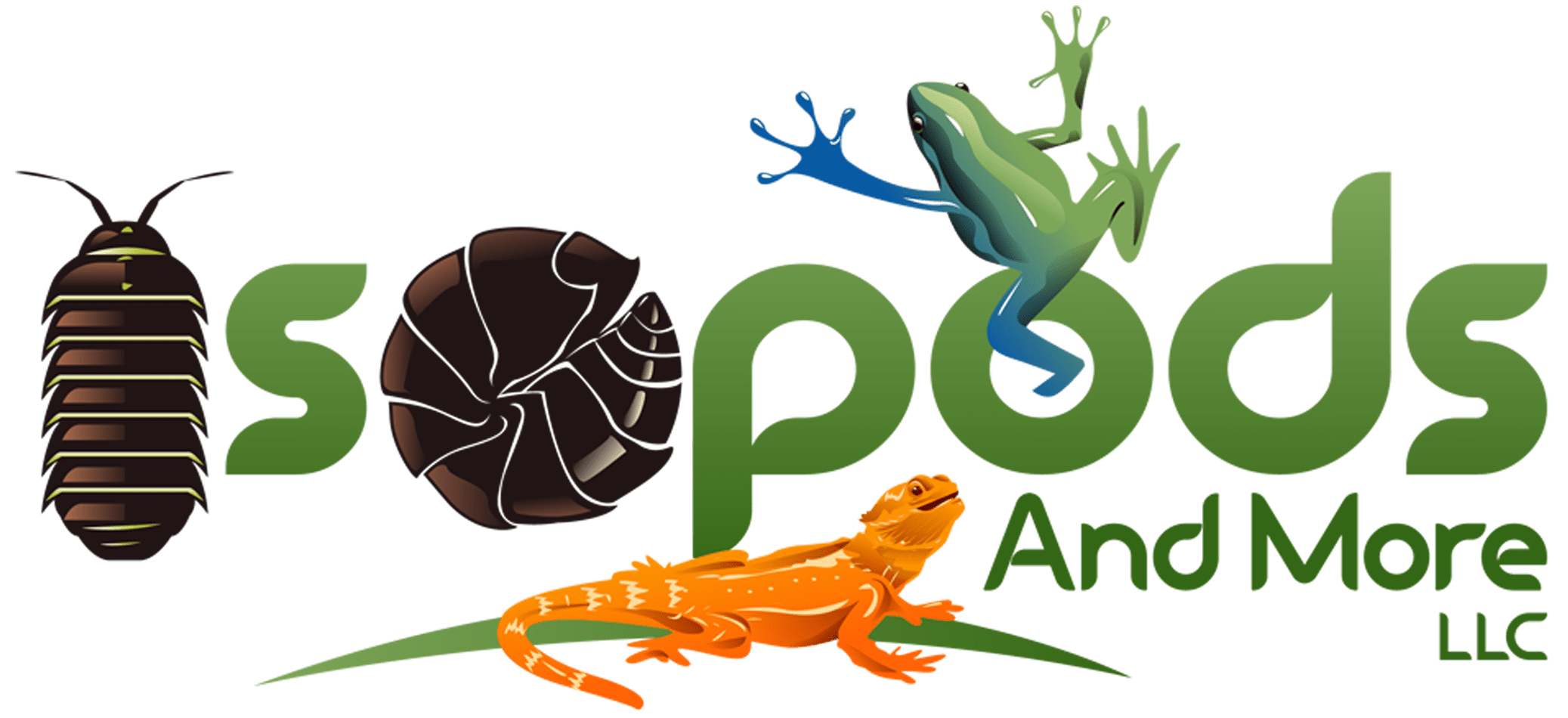Are you looking to dive into the world of isopod care and breeding? Look no further than our comprehensive guide, “Rubber Ducky: A Guide to Isopod Care.” Whether you’re a seasoned isopod enthusiast or a beginner just starting out, this guide will provide you with all the essential information you need to successfully care for your rubber ducky isopods. From setting up their habitat to understanding their unique behaviors and breeding patterns, we’ve got you covered. Get ready to embark on an exciting journey of isopod care with our informative guide.
Housing
Tank Size
When it comes to housing your rubber ducky isopods, it’s important to provide them with a suitable tank size. Isopods thrive in a spacious environment where they can explore and forage comfortably. For a small group of rubber ducky isopods, a tank measuring 5 to 10 gallons would suffice. However, if you plan on keeping a larger colony, it is recommended to opt for a tank that is at least 20 gallons or more.
Substrate
Choosing the right substrate is crucial for the well-being of your rubber ducky isopods. These fascinating creatures require a substrate that is both moisture-retaining and offers hiding spots. A mixture of organic materials such as coconut fiber, peat moss, and leaf litter works well to create a suitable substrate. Make sure to maintain a moisture level of around 60-80% to provide the optimal environment for your isopods.
Hideouts
Isopods are nocturnal animals that love to hide and feel secure in their surroundings. Providing adequate hideouts is essential to cater to their natural instincts. You can include various types of hiding spots in their tank, such as cork bark, terracotta pots, or specially designed isopod hideouts. These hideouts not only provide a sense of security but also create areas where isopods can lay their eggs or molt.
Lighting
Rubber ducky isopods do not have specific lighting requirements since they are primarily active during the dark hours. Ambient lighting is generally sufficient for their needs. However, it’s important to strike a balance and avoid excessive exposure to direct sunlight or bright artificial lighting, as this can disturb their natural activity patterns. Maintaining a natural light cycle, similar to their native habitat, is recommended for their overall well-being.
Temperature and Humidity
Maintaining the right temperature and humidity levels is crucial for the health and longevity of your rubber ducky isopods. The ideal temperature range for these isopods is around 70-75°F (21-24°C), which closely resembles their natural habitat. Use a reptile heating pad or an under-tank heater to maintain a consistent temperature in their tank. As for humidity, aim for levels between 60-80%. Regular misting of the tank and monitoring the humidity with a hygrometer will help you achieve the optimal conditions.
Feeding
Diet
Providing a nutritious and well-balanced diet is essential for the overall health of your rubber ducky isopods. These omnivorous creatures have a diverse diet that consists of decaying plant matter, organic detritus, and occasional animal protein. You can feed them a variety of foods such as leaf litter, dried leaves, fish flakes, algae wafers, and fresh fruits and vegetables. Offering a mix of these food items ensures that they receive the necessary nutrients for their growth and reproduction.
Feeding Schedule
Establishing a consistent feeding schedule is important to keep your rubber ducky isopods healthy and thriving. Isopods typically feed during the nighttime, so it’s best to offer food in the evening or when the lights are dimmed. For adult isopods, feeding them every two to three days is usually sufficient. However, it’s important to monitor their consumption and adjust the feeding schedule accordingly. Juvenile isopods may require more frequent feedings to support their growth.
Supplements
Though rubber ducky isopods derive most of their nutritional needs from their diet, providing additional supplements can be beneficial. Calcium and other minerals are important for the isopods’ exoskeleton development and reproduction. Calcium-rich supplements, such as powdered cuttlebone or calcium-fortified insectivore powders, can be offered occasionally. Remember to dust their food items lightly with the supplement to ensure they receive the necessary nutrients.
Water Requirements
Water Source
Providing a clean and reliable water source is essential for the well-being of your rubber ducky isopods. These isopods require access to fresh water to maintain hydration and regulate their moisture levels. You can either use distilled water or tap water treated with a dechlorinator to remove any harmful chemicals. Avoid using water that has been treated with water softeners, as the excess salts can be detrimental to the isopods’ health.
Water Dish
Having a shallow water dish in the tank allows your rubber ducky isopods to drink and replenish their moisture levels as needed. Use a dish that is easily accessible for them to climb in and out of, and ensure that it is filled with clean, dechlorinated water at all times. It’s important to monitor the water dish regularly and refill it whenever necessary to ensure a constant supply of fresh water.
Misting
Maintaining adequate humidity levels in the tank is crucial for the overall health of your rubber ducky isopods. Regularly misting the tank with dechlorinated water helps to create a humid environment and prevents the substrate from drying out. Pay attention to any changes in the humidity levels within the tank and adjust the misting frequency accordingly. Misting also provides the isopods with additional water sources through droplets that accumulate on the tank surfaces.
Social Structure
Group Size
Rubber ducky isopods are social creatures that thrive in a group setting. Keeping them in groups allows them to exhibit their natural behaviors and social interactions. Ideally, a group size of 10 to 20 isopods is recommended to establish a balanced dynamic within the tank. It’s important to monitor the group dynamics, as overcrowding can lead to stress and territorial disputes. If you notice any signs of aggression or dominance, it may be necessary to separate certain individuals into smaller groups.
Territorial Behavior
While rubber ducky isopods are generally peaceful, territorial behavior can occasionally be observed, especially during breeding and competition for resources. Providing sufficient hiding spots and ample food sources can help minimize any potential conflicts. If territorial disputes persist, it may be necessary to separate individuals into different sections of the tank or create additional territories within the enclosure to ensure a harmonious social structure.
Breeding
Mating Process
Rubber ducky isopods have fascinating breeding behaviors that are both intriguing to observe and important for their population growth. They have a complex mating process that involves male isopods approaching and courting receptive females. During courtship, males use their specialized appendages to transfer sperm to the female’s reproductive opening. Successful mating results in fertilization, leading to the production of eggs.
Egg Development
After successful mating, the female rubber ducky isopod will lay her eggs. These eggs are typically deposited in hidden areas within the substrate or within specialized incubation chambers built by the isopods. The eggs undergo a period of development and hatch into juvenile isopods after a few weeks. It’s important to provide a suitable substrate and ensure optimal conditions during this period to support the healthy development of the eggs.
Incubation
Rubber ducky isopods exhibit maternal care, with the females remaining close to their eggs and providing necessary moisture and protection. The duration of the incubation period varies depending on the species, but most rubber ducky isopod species have an incubation period ranging from 2 to 4 weeks. During this time, it is important to maintain stable temperature and humidity conditions to optimize the hatching success rate.
Handling and Care
Acclimation
When introducing new rubber ducky isopods to their enclosure, it’s essential to provide a proper acclimation period. Isopods are sensitive to sudden changes in their environment, so it’s important to slowly adjust them to their new tank conditions. Gradually introduce them to the tank by placing them in a separate container within the enclosure and gradually increase the time they spend in their new habitat. This allows them to acclimate to the temperature, humidity, and other tank parameters.
Handling Techniques
While handling rubber ducky isopods is not necessary for their care, occasionally, you may need to handle them for maintenance or relocation purposes. It’s important to handle them with care and minimize any stress or harm. To handle them, gently scoop them up using your hands or a soft, damp paintbrush. Avoid squeezing or dropping them, as their delicate exoskeleton can be easily damaged. Minimize handling to only when necessary to ensure their well-being.
Common Health Issues
Rubber ducky isopods are generally hardy creatures, but various health issues can arise if their care requirements are not met. It’s important to monitor their behavior and appearance regularly to catch any potential health problems early. Some common health issues in rubber ducky isopods include mite infestations, fungal infections, and dehydration. Maintaining proper tank conditions, providing a nutritious diet, and regular observation can help prevent and address these health concerns.
Tank Maintenance
Cleaning Schedule
Keeping the rubber ducky isopod tank clean is vital for the health and hygiene of your isopods. Regular cleaning should focus on removing any accumulated waste, uneaten food, and debris. A cleaning schedule of once every two to three weeks is generally sufficient. However, closely observe the tank conditions and adjust the frequency accordingly. Remember to replace any soiled substrate during the cleaning process to maintain a clean and odor-free environment.
Removing Waste
Regular waste removal from the isopod tank is important to prevent the build-up of harmful substances or odors. As isopods actively break down organic matter, they produce waste that needs to be removed. Use a small spoon or tweezers to carefully remove any visible waste or uneaten food. Be gentle while performing this task to avoid disturbing the isopods or damaging their habitat.
Maintaining Optimal Conditions
Ensuring optimal conditions within the isopod tank is essential for their overall well-being. Regularly monitor temperature, humidity levels, and provide appropriate lighting. Adjust the tank parameters as needed to maintain the optimal range for your rubber ducky isopods. Regularly check the functionality of heating pads, thermometers, and hygrometers to ensure accurate readings and make any necessary adjustments to maintain the desired conditions.
Compatibility
Tankmates to Avoid
While rubber ducky isopods are generally peaceful creatures, it’s important to be mindful of their tankmates. Avoid keeping them with animals that may pose a threat or stress them out, such as aggressive or predatory species. Additionally, avoid housing them with animals that may compete for their food and resources. It’s best to research the specific requirements and temperament of potential tankmates to ensure a harmonious coexistence.
Suitable Tankmates
Rubber ducky isopods can coexist peacefully with various invertebrates and some small, non-aggressive species. Snails, millipedes, springtails, and other species of isopods can often be compatible tankmates. However, it’s crucial to carefully monitor their interactions and ensure that the tank size and resources are sufficient to accommodate all the inhabitants. Always introduce new tankmates slowly and observe their behavior to minimize any potential conflicts.
Isopod Varieties and Selection
Different Species
The world of isopods is incredibly diverse, with numerous species available for enthusiasts. Rubber ducky isopods (Porcellio scaber ‘Rubber Ducky’) are a popular choice due to their attractive yellow coloration and ease of care. However, other isopod species, such as Porcellionides pruinosus or Armadillidium maculatum, offer unique colors and patterns. Research different species and explore their care requirements to find the perfect isopods to add to your collection.
Choosing Healthy Isopods
When selecting rubber ducky isopods or any other species for your tank, it’s important to choose healthy individuals. Look for active, well-groomed isopods with intact exoskeletons. Avoid individuals that appear lethargic, injured, or overly stressed. Ensure that the isopods are sourced from reputable breeders or sellers who prioritize the well-being of their animals. Healthy isopods are more likely to thrive in their new environment and contribute positively to your tank ecosystem.
FAQs
How often should I feed my isopods?
For adult rubber ducky isopods, feeding them every two to three days is usually sufficient. However, monitor their consumption and adjust the feeding schedule accordingly. Juvenile isopods may require more frequent feedings to support their growth.
What is the lifespan of a rubber ducky isopod?
The lifespan of a rubber ducky isopod varies depending on various factors, including care, genetics, and environmental conditions. On average, rubber ducky isopods can live for approximately one to two years, but some individuals can live up to three years or longer when provided with optimum care.
Can rubber ducky isopods live with other isopod species?
Rubber ducky isopods can generally coexist peacefully with other isopod species. However, it’s important to closely observe their interactions and ensure that the tank size and resources are sufficient to accommodate all the inhabitants.
How do I create a humidity gradient in the tank?
To create a humidity gradient in your rubber ducky isopod tank, you can focus misting more heavily on one side of the enclosure while allowing the other side to dry out slightly. This creates a variation in humidity levels, catering to the isopods’ preference for different moisture conditions. Using a hygrometer, monitor the humidity levels in different areas of the tank to ensure that the gradient is within the optimal range for your isopods.



